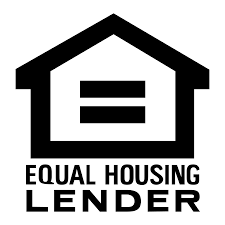What Is an Adjustable Rate Mortgage (ARM)?
While fixed-rate mortgages are the more popular option, ARMs are a viable choice for a home loan. The fluctuating interest rate of the housing market may be beneficial, despite the added uncertainty. This article will cover the basics of adjustable-rate mortgages, how they work, the difference between ARM and fixed-rate, and more.
Click Here To Connect With Wesley Mortgage Today And Begin Your Mortgage Journey
What Is an ARM?
ARM stands for an adjustable-rate mortgage, one of the two major programs for conventional home loans. An ARM loan begins with a fixed-rate period, during which the interest rate will not fluctuate, providing a predictable payment amount. After this period ends, the rate will adjust according to an index, such as the U.S. Treasury rates, plus the lender’s determined margin. It can then adjust by intervals of one, three, five, or ten years.
How Does an ARM Work?
Adjustable-rate mortgages works like fixed-rate mortgages for the first three months to ten years. After the agreed-upon period, the interest rate will adjust to match an index, often the U.S. treasury rate. There will also be a margin of interest which the lender determines.
It is common for lenders to put caps on how high or low the mortgage payments can fluctuate, ensuring no extreme rate hikes. Besides the rate changes, ARMs function like conventional loans regarding payments, amortization schedules, and PMI.
Benefits of an ARM
Although they may appear risky, ARMs offer some appealing benefits in certain situations. Often, an ARM loan have lower interest rates. This is perfect for homebuyers who plan on selling before the fixed period expires. Or, for market-savvy individuals who believe rates will decrease, it gives them an opportunity to capitalize.
Risks of an ARM
While the benefits are excellent, adjustable-rate mortgages also carry many risks. The selling point of an ARM is that the interest rate fluctuates. A fluctuating rate means that the borrower must prepare to have higher payments at the end of every period. If interest rates increase, so will the payment.
When rates go up a lot, it is referred to as payment shock. It might bring unprepared homeowners financial stress. The rate changes also add an element of uncertainty, which may lead to budget problems. If interest rates rise, it may be difficult to obtain a refinance for your ARM. This is problematic for those who wish to switch to a fixed-rate mortgage.
ARM vs. Fixed Rate Mortgage
Adjustable and fixed-rate mortgages are two loan programs for conventional home loans. They are distinct in the way that the interest rate changes, or doesn’t, over time.
ARMs have an interest rate that adjusts after the fixed-rate period. Fixed-rate loans will never change interest rates unless refinanced. ARM often offers lower initial rates, while fixed-rate will offer a more stable and predictable payment plan. Fixed-rate loans are the default loan type, with homebuyers seeking out ARM loans in specific situations.
Types of ARM Loans
There are seven major ARM loan types. They follow the same basic principles, however, they are repaid at different speeds or with varied interest periods.
- Hybrid ARMs: These mortgages begin with a fixed-rate period, which vary from three to ten years. After this, the rate will be adjusted according to an index and the lender’s margin.
- 3/1 ARM: this ARM has a fixed rate for three years and be adjusted annually for the rest of the loan life.
- 5/1 ARM: like the 3/1, except the fixed rate lasts for five years before the annual adjustments begin.
- 7/1 ARM: same as the above loans, except with a seven-year fixed rate.
- 10/1 ARM: same as the above, but with a 10-year fixed rate.
- 5/5 ARM: This loan has a five-year fixed rate and then will be adjusted every five years after the end of the first period.
- Interest-only ARM: This ARM allows the homebuyer to make payments only on the interest for the first period of 5 to 10 years, after which it becomes a standard ARM.
How to Qualify for an ARM
Lenders look for high credit scores, stable income, low DTI, and stable financial history. With an ARM, lenders may also require proof of cash reserves to demonstrate the homeowner can handle a payment increase if one occurred.
Understanding ARM Interest Rates
The world of ARM loans may be confusing. To understand how ARM interest rates work, 4 issues need to be explained: caps, indexes, reset periods, and prepayment penalties.
ARM Caps
ARM caps give boundaries to how high the adjusted rate can climb. If the cap is 1%, then no matter how high the index rises, the ARM interest rate cannot adjust more than 1% per period.
ARM Indexes
Every ARM uses an index to determine how the rates must be adjusted. If the index rises, so will the ARM interest. Typical indexes include the London Interbank Offered Rate (LIBOR), the Constant Maturity Treasury (CMT) rate, or the Cost of Funds Index (COFI).
ARM Reset Periods
ARM reset periods refer to the adjustment periods of the loan. If the interest rate adjusts every 3 years, the ARM has a 3-year reset period.
ARM Payment Calculators
ARM payment calculators are online tools used to predict the payments of an ARM loan. Click here to try ours!
Summary
ARM loans are a viable alternative to the fixed-rate loan in certain situations. They have many risks and benefits, all of which need to be considered. Caps, indexes, and reset periods are helpful to understand the interest rates for a particular ARM. To learn more about adjustable-rate mortgages, contact a representative at Wesley Mortgage, the official mortgage provider of the Tennessee Titans, at the link below!
Click Here To Connect With Wesley Mortgage Today And Begin Your Mortgage Journey





